The New Spaces of Health Care
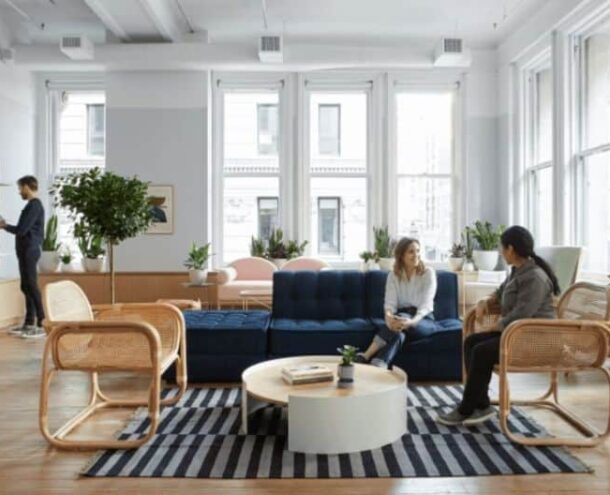
Exploring Changes that Deliver More Human Brand Experience
By: Ashton Furgeson and Sam Tucker
It’s more apparent now than ever before—health care is everywhere, and it needs to be.
Our rapidly evolving landscape of technology, design and consumer choice means traditional health care buildings are no longer the epicenter of health experiences. And in the wake of a global pandemic, the demand for care hasn’t diminished, but the desire and ability to visit traditional care spaces has bottomed out.
As conventional care models try to keep up with modern expectations, the new kids on the block have seized the opportunity to deliver a more human experience. Below we will explore five experience innovation groups: Blended Experiences, Wellness and Self-Care, Hospitals and Health Systems, The Outsiders, and Telehealth – with tangible brand examples of each as distinct takeaways.
Blended Experiences
Primary care startups and some traditional care spaces are redefining what it means to experience and engage with health care. By paying attention to consumer needs, desires and favored experiences in other categories, these brands are revolutionizing the industry by integrating technology, data and human-centric design.
Parsley: Leveraging data and biophilic design to care for the whole patient
Physicians and patients alike recognize the need for a new type of primary care. Dr. Robin Berzin founded Parsley, one of the leading health startups, based on a model of care that promotes preventative care and enables positive changes in your personal environment.
Intent to create a space that reflects that philosophy, her team utilized evidence-based-design and biophilic patterns—design patterns driven by our innate connection to nature and its healing benefits—to create a flagship office that is inviting, intimate and naturally attuned to human biological comforts.
Learn More: Meet the Health Care Disruptors Coming For Your Brand
Tunable LED lighting that reflects natural light levels throughout the day and large, unimpeded views of nature (no small feat on 5th Avenue, NYC) tap into the biophilic patterns of Dynamic Light and Prospect. The use of natural wood could be written off as a high-end design choice by the layman, but data proves that such materials provide calming effects on the body and can lower diastolic blood pressure.
Every design choice within Parsley is carefully considered to create a space that is shifting the health care norm from reactivity and fear to prevention and comfort. This intentionality reflects a brand focused on the whole person.
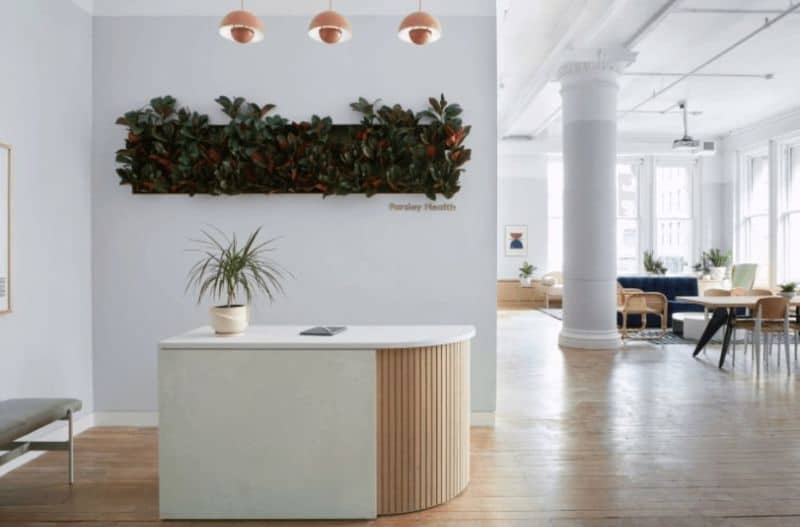
Photo Courtesy: Parsley Health
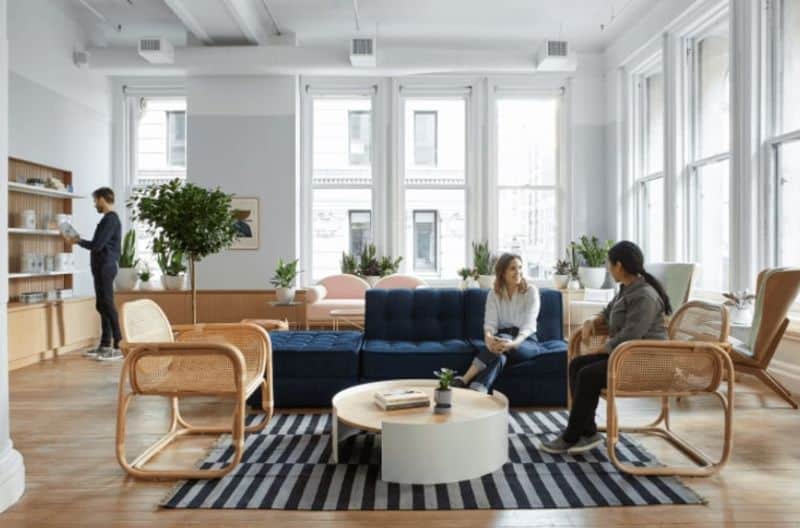
Photo Courtesy: Parsley Health
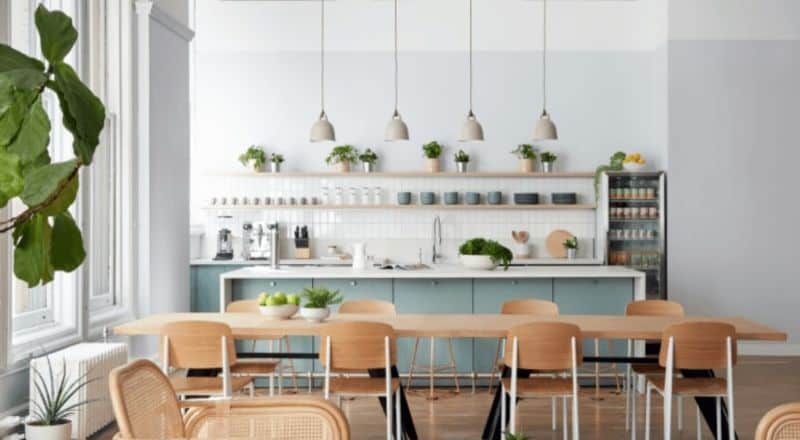
Photo Courtesy: Parsley Health
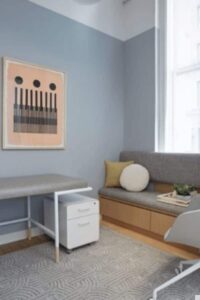
Photo Courtesy: Parsley Health
Forward: Maximizing technology, empowering physicians
Forward CEO and founder Adrian Aoun set out to right the wrongs he observed during a family member’s critical care experience. He recognized key inefficiencies in a broken system and decided to create a better model of care from scratch.
Largely driven by technology, Forward provides virtual appointments 24/7, as well as in-person care at one of their eight physical locations across the country. Rather than stepping into an uncomfortable waiting area and navigating exam rooms that feel like sickness itself, the experience at Forward is sleek and state-of-the-art from the moment you enter their lobby. More like an Apple Store experience than a primary care office, you first check in at an iPad and step onto a body scanner that records vitals and other key data that’s automatically uploaded to your health record. Before entering your comfortable, high-tech exam room, someone asks you if you’d prefer sparkling or still water. From there, your experience continues to be data driven and information rich, but with another vitally important element—the fully engaged presence of your doctor.
Learn More: Playbook for the Health Care Brand Leader in the Post-COVID World
Liberated from administrative duties and tech inefficiencies, Forward providers are part of a system built to remove common barriers to health care, excite people about their care experience and develop trust in quality care. And all of this translates to their virtual care, too.
The Forward approach to solving health care problems? Going straight to consumers and building what they want. With hundreds of positive reviews, it seems like they’re getting it right:
-
- “Forward makes me feel like my health is important, like I have a supportive team, and like I have some control.”
- “From the moment I came in it was personal attention with no interruptions. I have never enjoyed going to the doctor like I did here.”
- “I think we all just get used to being treated like a number by the medical field. Now I feel like a person who matters.”
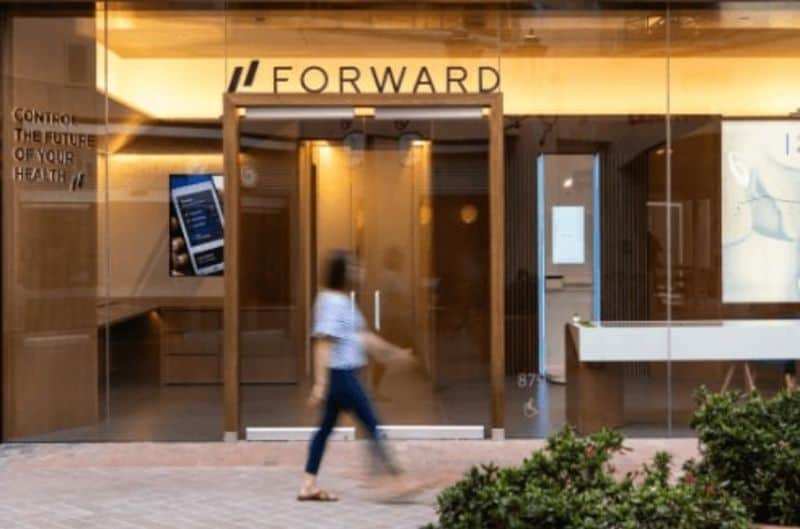
Photo Courtesy: Forward
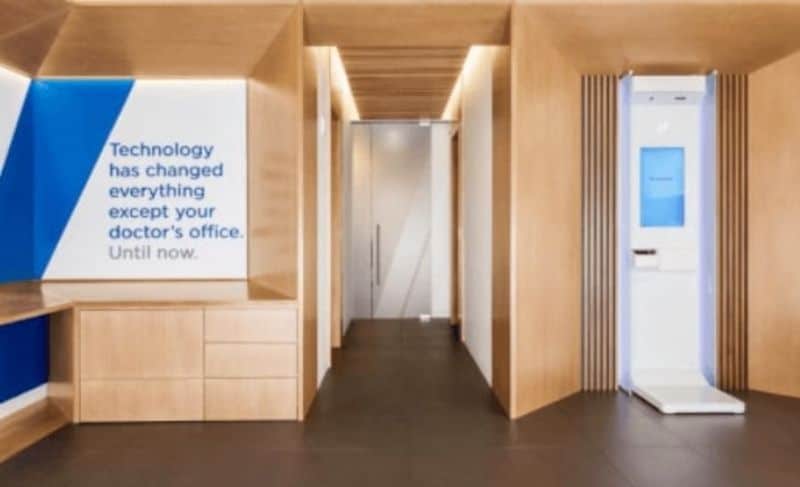
Photo Courtesy: Forward
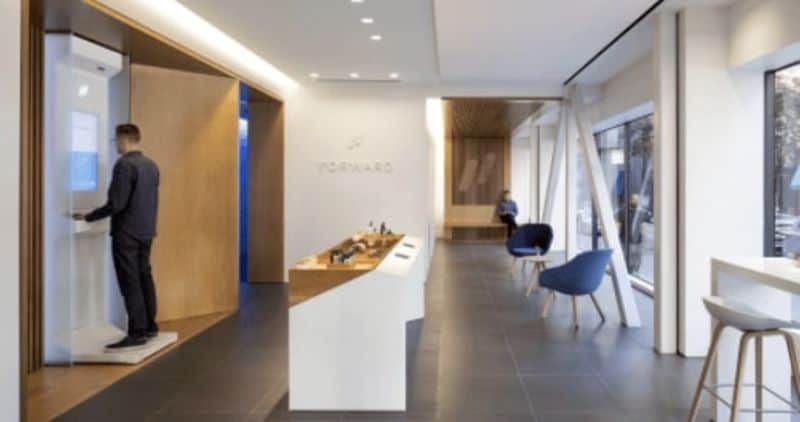
Photo Courtesy: Forward
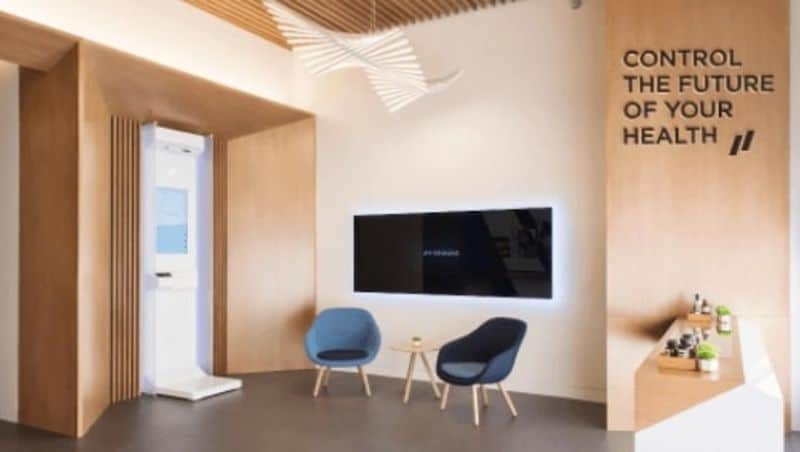
Photo Courtesy: Forward
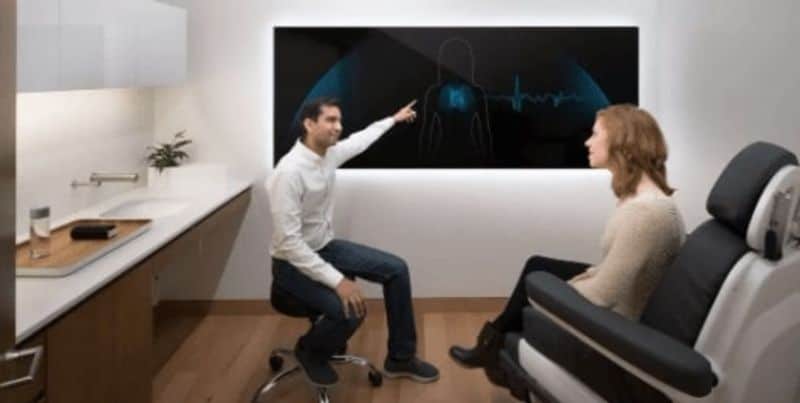
Photo Courtesy: Forward
One Medical: Convenience and ease through human-centered design
For One Medical, the focus is people first. Like Forward, One Medical sought to address the gaps in traditional health care experiences by paying attention to what consumers want. They also recognized that digitization wouldn’t be enough if it didn’t offer “effective, easy and emotionally positive experiences.”
Learn More: The Real Way Consumers Measure Experience Quality
One Medical has also designed beautiful spaces, touting “offices you’ll want to visit,” seamless virtual care, and every touchpoint is backed by data. Patient journeys inform how teams work together to improve the patient experience. Patient feedback via surveys, user testing and focus groups directs experience design. Ongoing data collection enables One Medical to continually improve operations, including mobile experiences that help drive better outcomes and more proactive, preventative care.
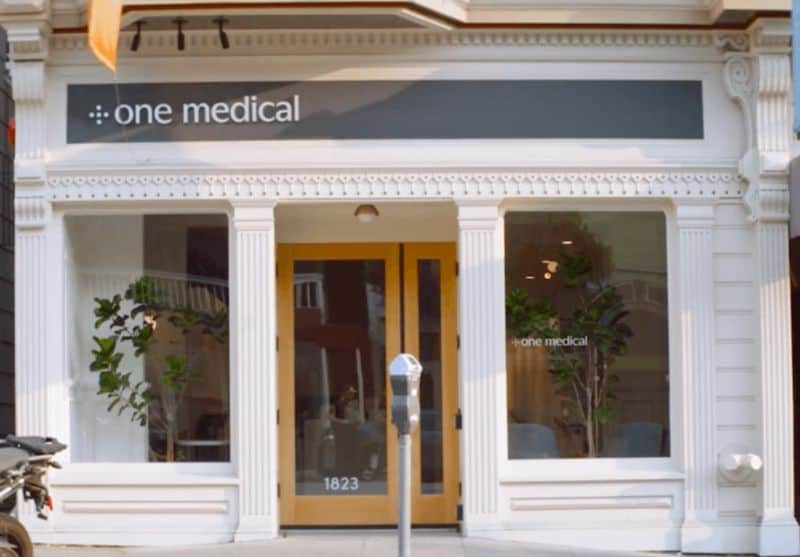
Photo Courtesy: One Medical
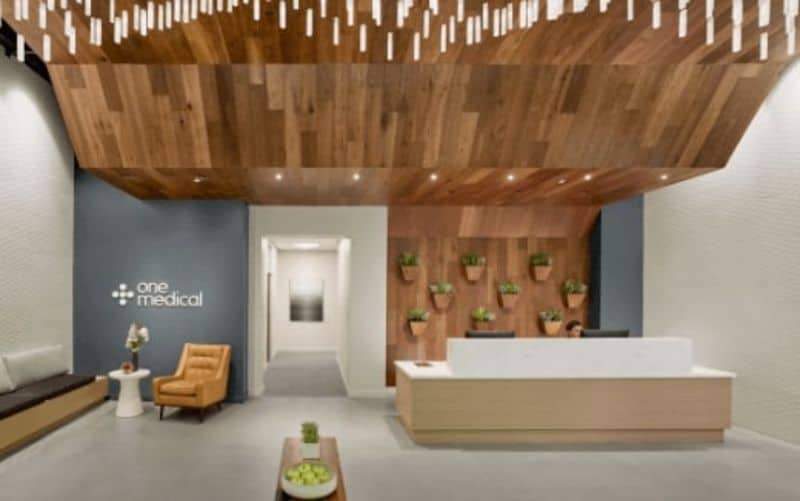
Photo Courtesy: One Medical
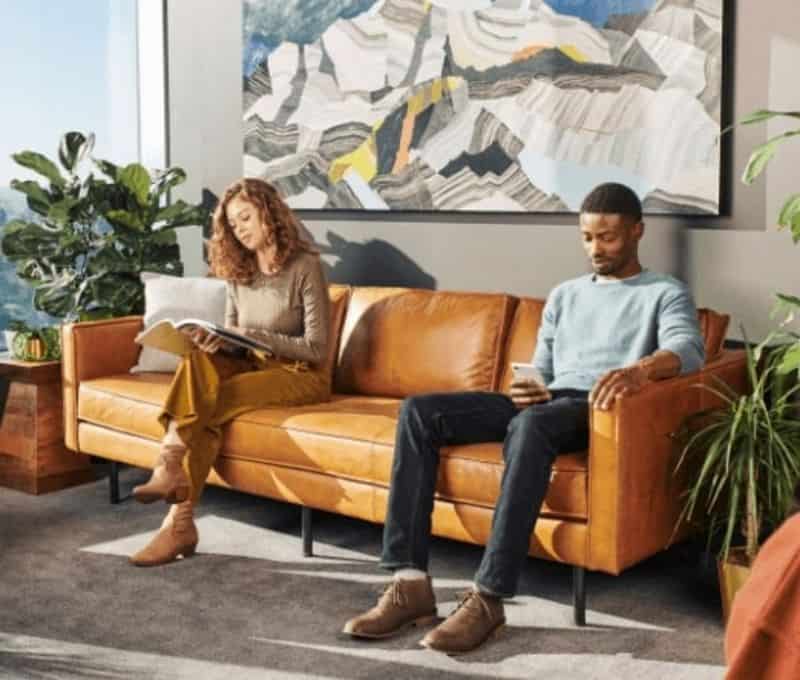
Photo Courtesy: One Medical
Wellness and Self-Care
Primary care delivery isn’t the only space being reimagined. Holistic wellness hubs—physical spaces and in-app experiences—are cropping up as self-care values continue to trend upwards.
The Well: “Your complete ecosystem for wellness”
More than a gym, The Well is an upscale membership-based health hub offering an integrative network of practitioners, exercise classes and personal trainers, retail shop, restaurant, wellness programming and out-of-this-world amenities like thermal suites, a meditation dome and relaxation lounge. Bright, airy, plant-filled and crystal-adorned, the 18,000 square foot space in NYC is an aesthete’s paradise.
It’s an East-meets-West model of care in both form and function.
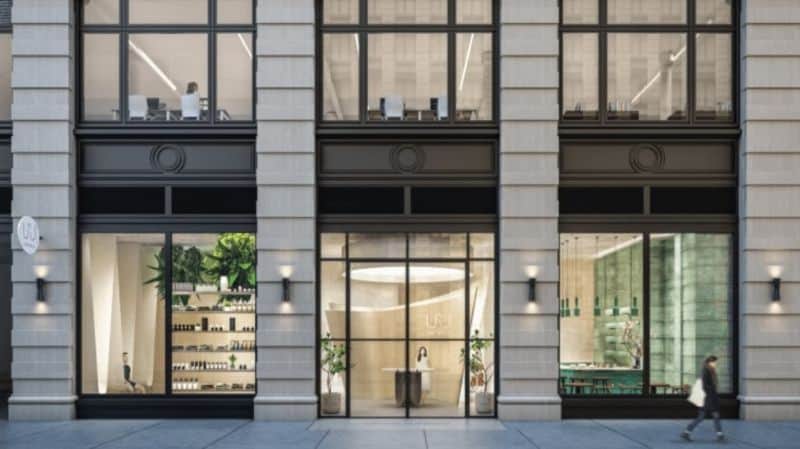
Photo Courtesy: The Well
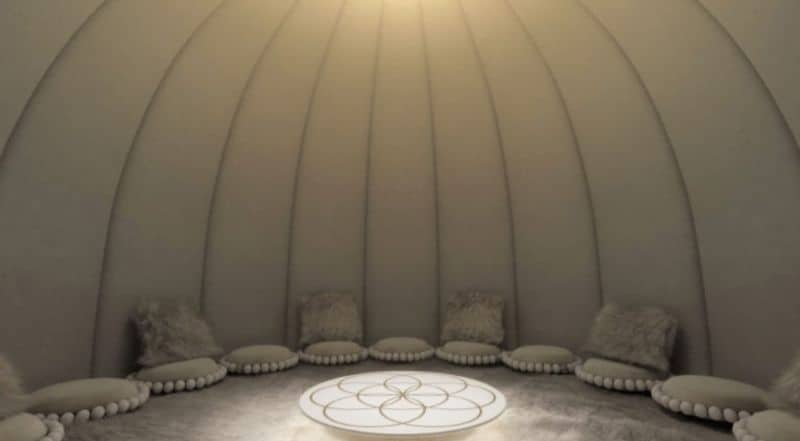
Photo Courtesy: The Well
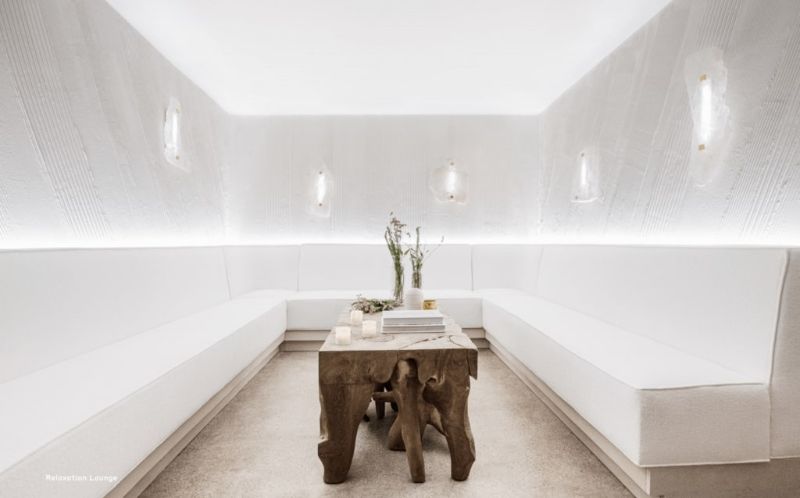
Photo Courtesy: The Well
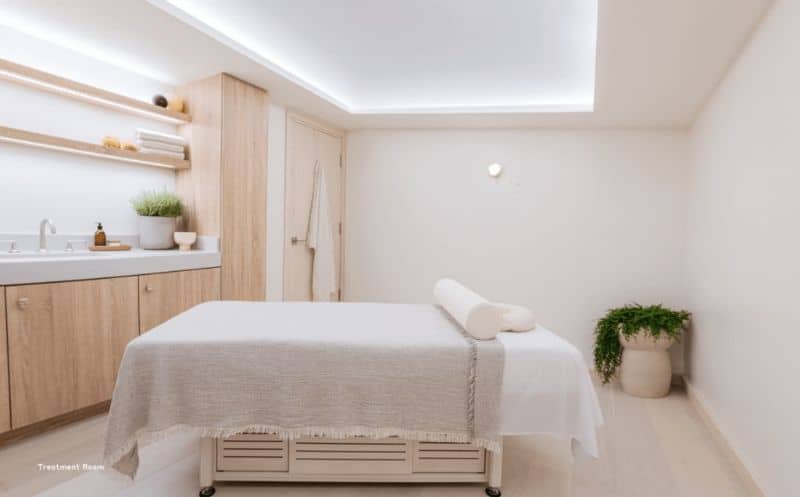
Photo Courtesy: The Well
Hospitals and Health Systems
Hospital systems are beginning to design more humanized experiences.
Boulder Community Health: empowering employees and patients to control their experience
Similar to Parsley Health, Boulder Community Health has been a prominent local adopter of evidence-based design and infusing the natural world into their space planning. BCH’s most influential evidence-based work has been the space planning and design of the Riverbend Health Center behavioral health unit.
Learn More: 3 Ways Brand Marketing Can Create More Human Health Care Experiences
Patients can often spend weeks or months in residence at the center, so the space was intentionally designed to meet the needs of staff and patients. By tapping into elements of Boulder’s natural environment through their planning and materials, the team incorporated biophilic principles that foster healing and productivity in connection with nature. Open courtyards, non-toxic plants, large windows, tunable lighting and a neighborhood-style space plan all provide efficiencies for providers and empowerment for patients to experience an optimal healing environment.
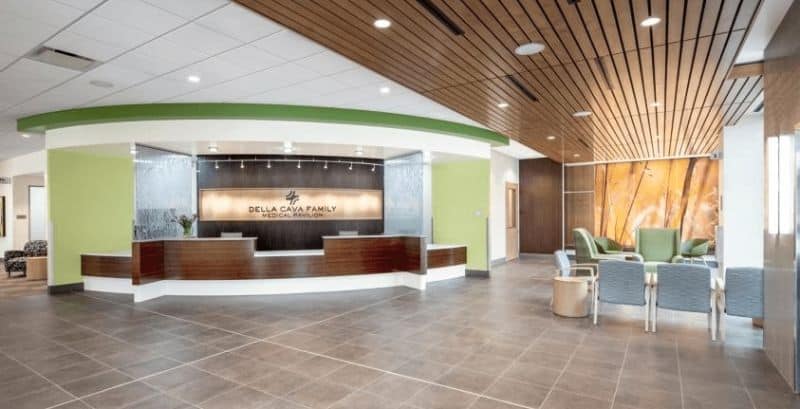
Photo Courtesy: Boulder Community Health
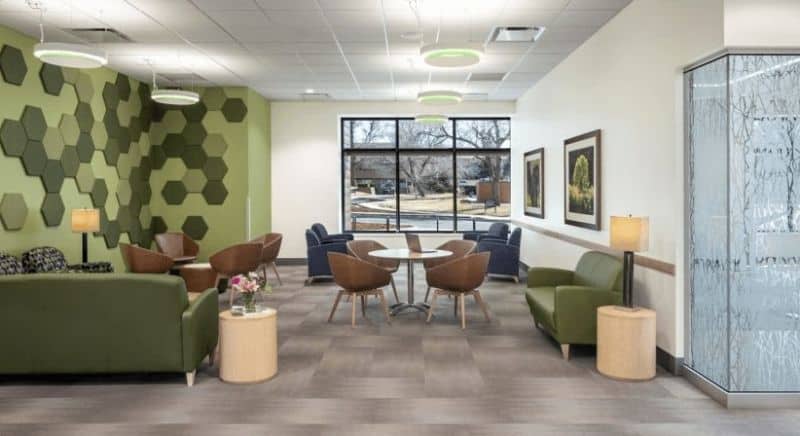
Photo Courtesy: Boulder Community Health
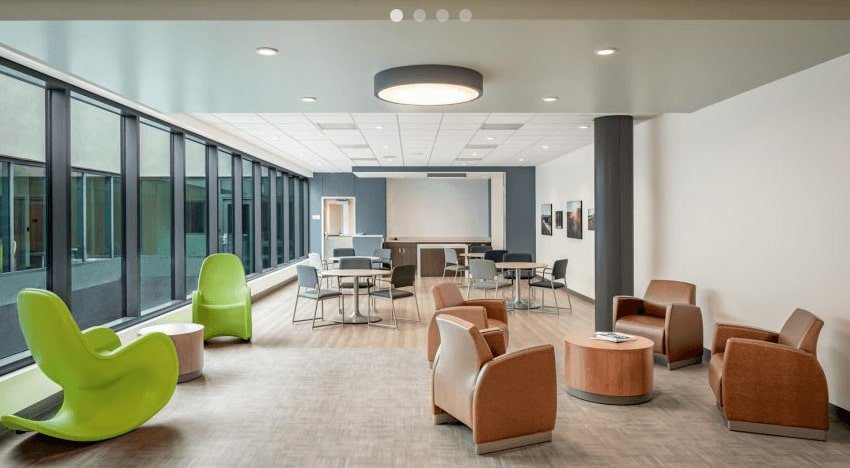
Photo Courtesy: Boulder Community Health
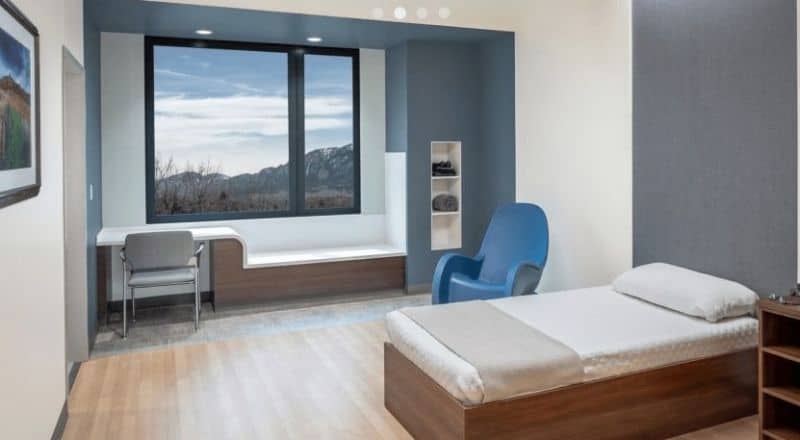
Photo Courtesy: Boulder Community Health
The Outsiders
Changing the health care scene isn’t limited to boutique startups, tech companies or traditional health systems. Household brand names are emerging with their own health care offerings.
CVS HealthHUB, Walmart Health: simple, convenient and affordable
Shifting away from candy and greeting cards, CVS HealthHUB focuses on creating concierge-style health care experiences within their stores—something consumers can’t buy online. Pilot stores use modern, vibrant design that’s both attractive and functional. Iconography at the concierge desk, iPad stations and health screening devices foster a feeling of helpful convenience and ease. Many stores will include designated wellness rooms for services and offerings such as nutrition counseling, fitness classes and other educational opportunities.
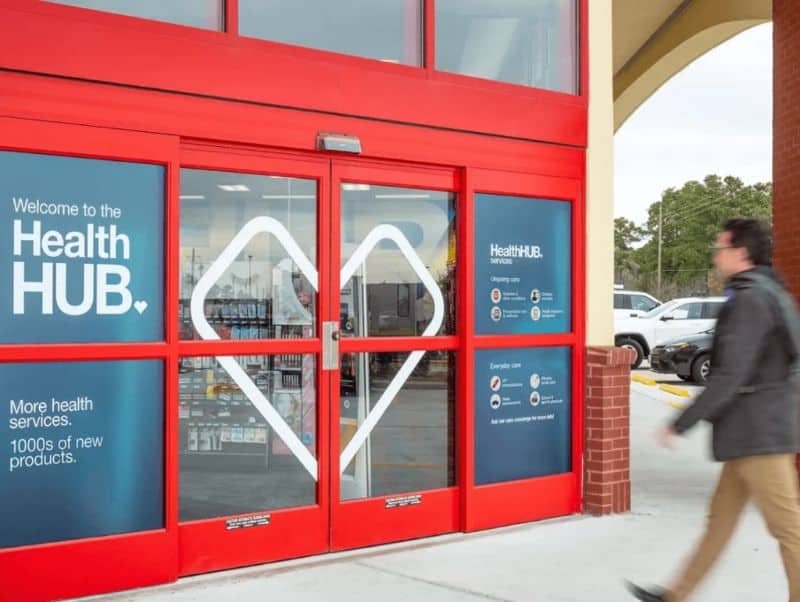
Photo Courtesy: CVS Health Hub
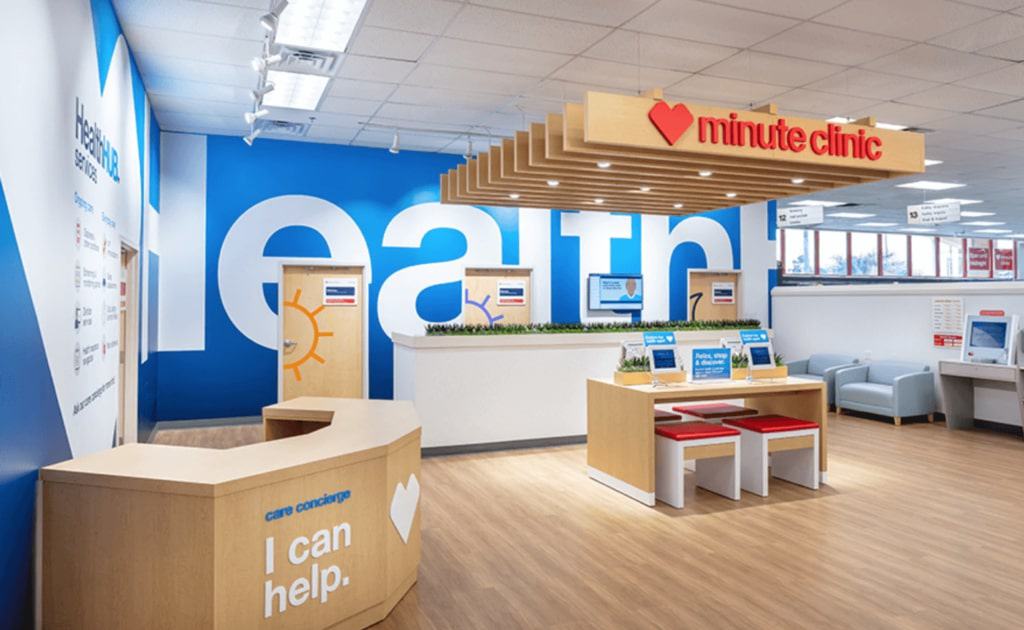
Photo Courtesy: CVS Health Hub
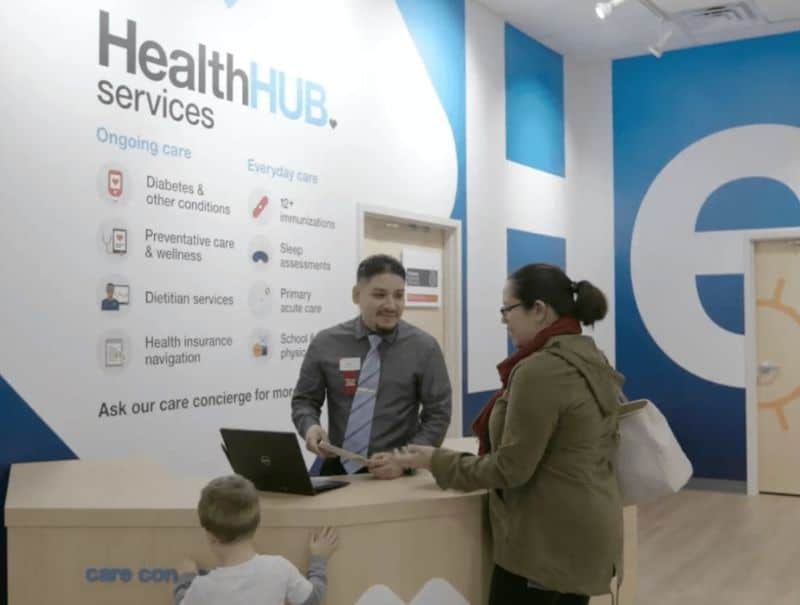
Photo Courtesy: CVS Health Hub
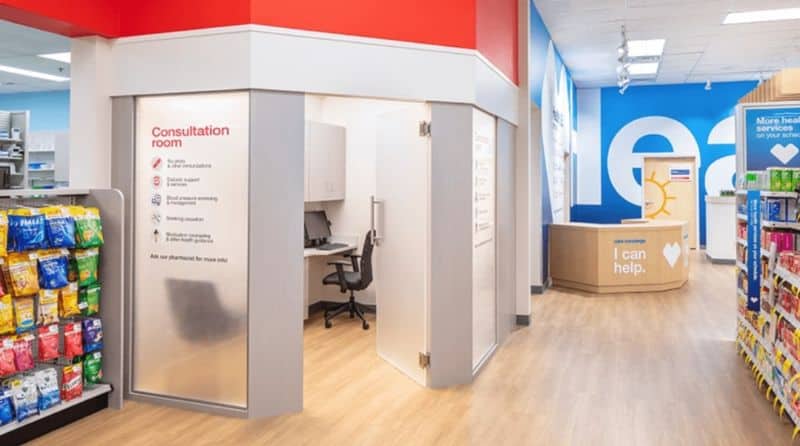
Photo Courtesy: CVS Health Hub
Learn More: CVS HealthHUB: The Experience Consumers are Asking For
Like HealthHUB, the two Walmart Health pilot locations in Georgia are contemporary and inviting spaces. More than the space, however, this new venture is about meeting the more pressing needs of the rural communities its serving—low-cost medical care for the uninsured and underinsured and accessible, reliable care options for those who need it.
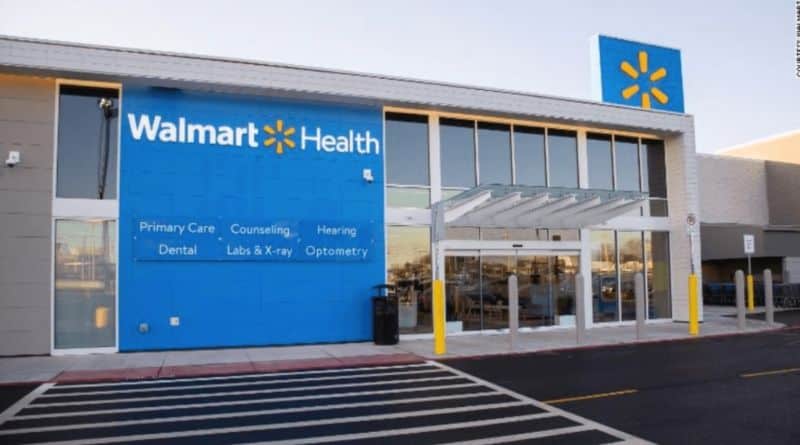
Photo Courtesy: Walmart Health
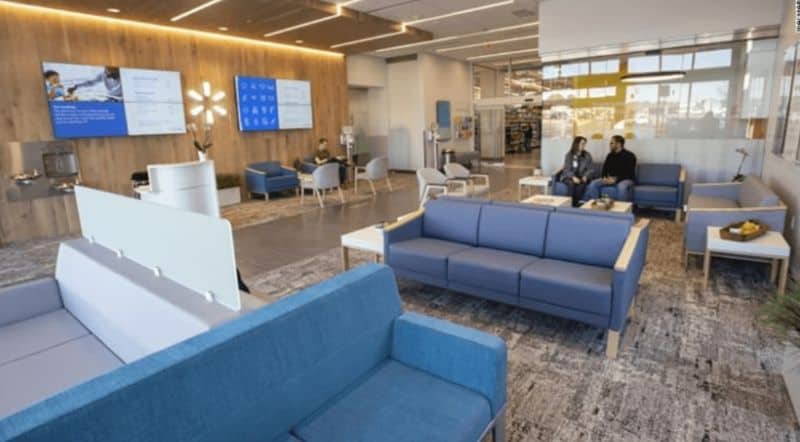
Photo Courtesy: Walmart Health
Telehealth
It’s no surprise that telemedicine engagement has surged exponentially with the onset of Covid-19. In fact, it will likely be a new norm in receiving routine medical care. But will traditional health care brands embrace the consumer demand? And will telehealth platforms integrate with those brands? When organizations no longer have control of the spaces in which patients receive care, how can they continue to impact patient experience?
Teladoc, one of the foremost telemedicine apps, is committed to a thoughtful, engaging and easy experience for users. They implement simple medical history forms and help patients connect with the right provider when they need it through their health assistant bot.
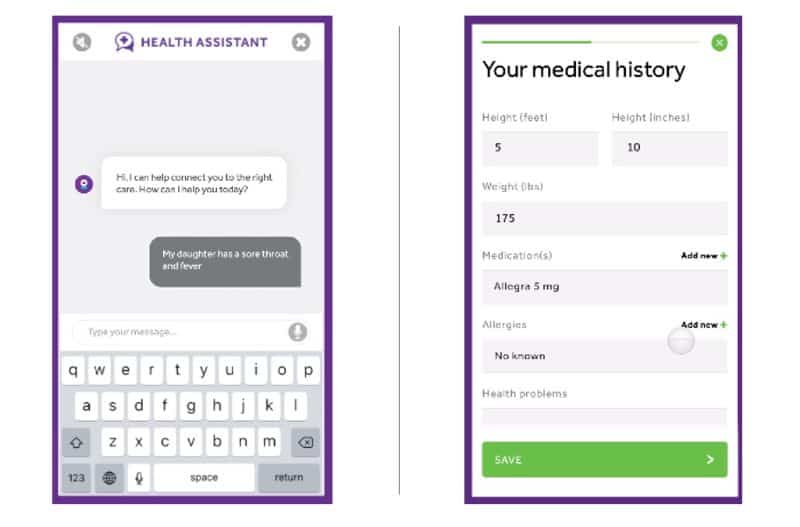
Until recently, Zocdoc has primarily served as a directory connecting patients with local, available doctors. Now, it’s offering a new service enabling free, secure video visits with local in-network doctors within their directory. Their in-app experience is vibrant, colorful and infused with friendliness and warmth.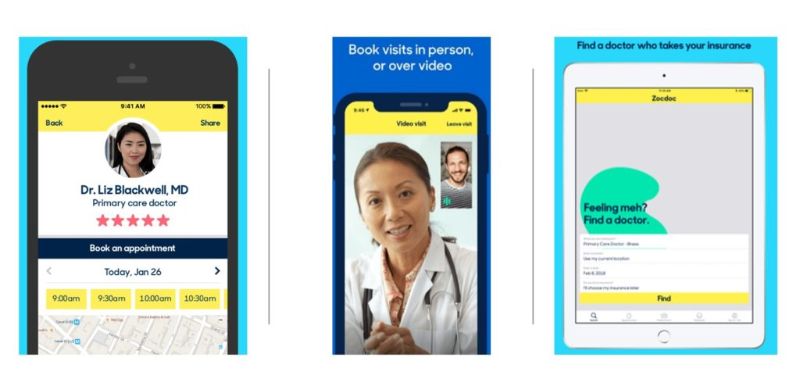
Without the environmental cues of a physical location, it’s imperative that brands infuse their telehealth experience with a humanity that translates across devices and screens. Both One Medical and Forward have built their virtual experiences in tandem with their physical brand experiences, and it shows. Both are sleek, human and extremely user friendly, enabling patients to have more control and access to their entire care experience.
So What Do These Experience Shifts Tell Us?
It’s unreasonable to attempt massive experience changes overnight, and not every tactic makes sense for every brand. But we hope that you’ll find inspiration from these best-in-class examples. They all have one critical theme in common—an experience built with unique consumers in mind and anchored on what they value most in the experience.
Learn More: Humanizing Brand Experience, Volume 2
As our world evolves into the next normal, remember that consumers heavily focus on experience, especially when it comes to the senses. In fact, we found through our Humanizing Brand Experience research that health care brands with the strongest preference and advocacy appeal to consumers’ senses. We encourage you to begin thinking of ways you can infuse these elements into your spaces and deliver this fundamental aspect of brand experience.
Want to reach out for more examples? We have lots! Continue the conversation by engaging with us on social, or reaching out here.


